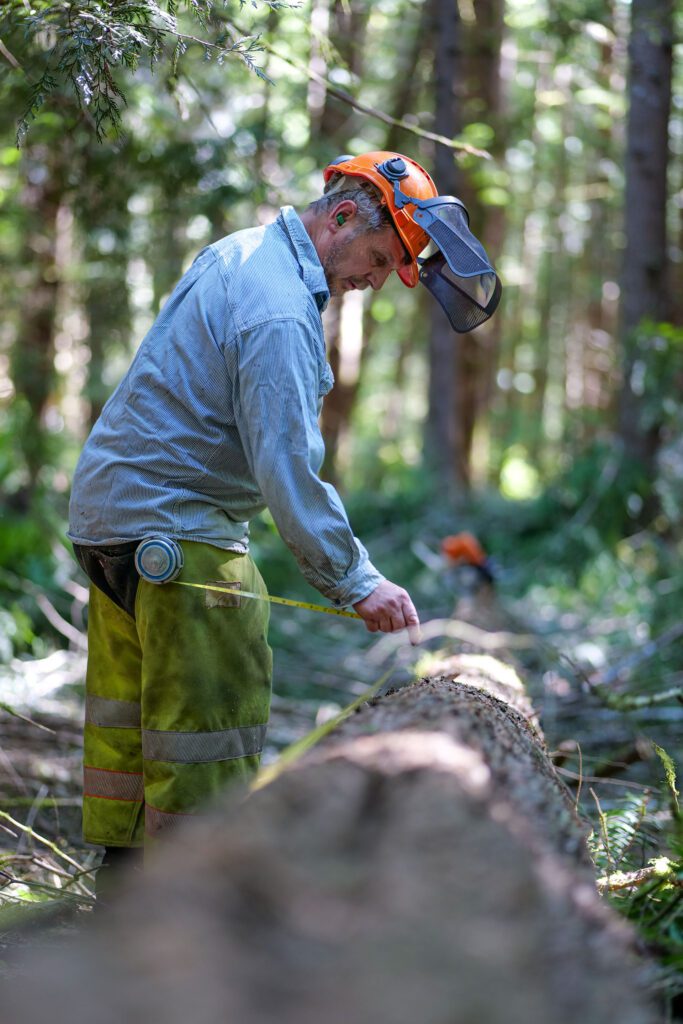Forest-to-Grid – The Journey of a Utility Pole Begins [VIDEO]
Only 5-7% of trees on average in a given stand of timber make the grade as a utility pole.

Making the grade as a utility pole is no small feat. Only select trees meet the rigorous standards required — they must be free from visible damage (both old and new), free of powder worm infestation, and have the ideal straight, tall form. Even then, their journey varies depending on use. Poles can range in size from smaller poles supporting communication lines to massive transmission poles stretching up to 125 feet long.
Utility poles can come from unexpected places. Selective harvesting by property owners offers a sustainable way to source high-quality poles without large-scale clear cutting. As shown here by Jefferson PUD District 3 Commissioner Dan Toepper, this method helps improve forest health by creating openings in dense canopies, promoting better growth for the surrounding stand.
Commissioner Toepper recently partnered with a regional pole timber buyer to identify and selectively harvest western red cedar from his family’s property. The result: 25 logs now destined for use somewhere in the regional electric grid. Exactly where? That remains to be seen, as the process from harvest to final treatment can take over a year — but one thing’s certain: these locally grown trees will soon be supporting power in the Northwest.
Stay tuned for a follow-up story, where we’ll take a closer look at how utility poles are produced at a regional manufacturing facility.